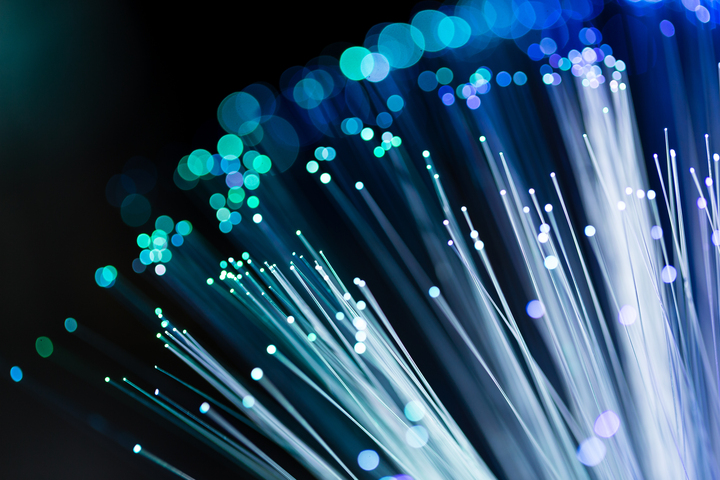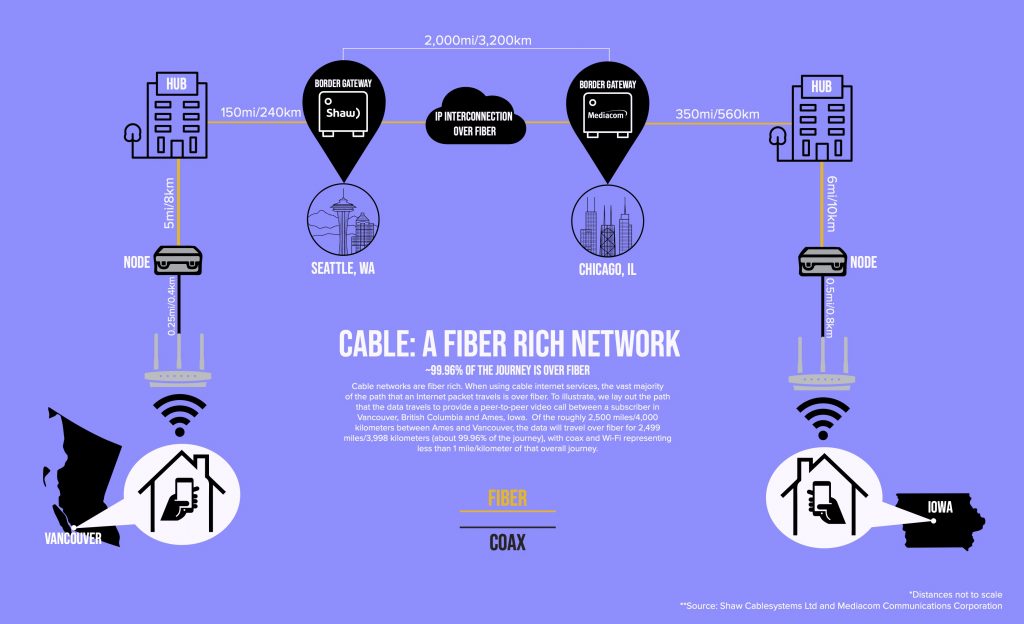HFC Network
A Fiber-Rich Cable Network: What Does It Really Mean?

Cable networks are fiber-rich, and cable operators have long invested in deploying more fiber deeper into their networks. A fiber-rich environment enables greater capacity, increased speeds and more flexibility to support a range of access technologies. Although cable broadband networks are typically composed of both fiber optic and coaxial cables, most cable customers are surprised to learn that the vast majority of the distance that an internet packet travels is over fiber.
In simple terms, a cable network is composed mostly of fiber that connects the interconnection border gateways to the regional hubs to the optical nodes. The remaining short distance—from the optical node to the customer’s home and then to each individual device in the home—is where the internet packet travels over coaxial cable and home Wi-Fi.
Let’s take a look at a simple real-life example, illustrated below. When a cable customer in Vancouver, Canada, makes a video call to a cable customer in Ames, Iowa, the data starts its journey over Wi-Fi to the home router and then travels about a quarter of a mile from the router to the nearest optical node via a coaxial cable. From that point, the data is converted to a fiber-optic signal that carries it for about 2,499 miles—or 99.96 percent of the total journey—to another neighborhood optical node in Ames. The remaining half-mile or less from the node to the other customer’s home is again transmitted over coax and Wi-Fi. As you can see, less than 1 mile (1.5 kilometers) of the data’s 2,500-mile (3,200-kilometer) journey between Vancouver and Ames is transmitted over coax and Wi-Fi—the rest is all fiber!
You can download the infographic here. Interested in learning more about cable networks in the future? Subscribe to our blog.



